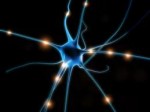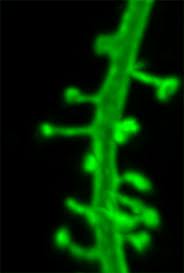 New research shows that women with Alzheimer’s disease show worse mental deterioration than men, even when at the same stage of the the disease.
New research shows that women with Alzheimer’s disease show worse mental deterioration than men, even when at the same stage of the the disease.
According to researchers at the University of Hertfordshire, men with Alzheimer’s consistently performed better than women across the five cognitive areas they examined.
Most remarkably, the verbal skills of women with Alzheimer’s are worse when compared to men with the disease. This finding is a striking difference to the profile for the healthy population where females have a distinct advantage.
Led by Keith Laws, Ph.D., the research team completed a meta-analysis of neurocognitive data from 15 published studies, which revealed a consistent male advantage on verbal and visuospatial tasks, as well as on tests of both episodic memory and semantic memory.
Episodic memory describes our ability to recall specific events of our own past, accompanied by the feeling of remembering. Semantic memory is knowledge that we acquire that is purely factual without any personal feeling or history attached.
“Unlike mental decline associated with normal aging, something about Alzheimer’s specifically disadvantages women,” said Laws, a psychology professor.
The influence of hormones might be a possible explanation, he said, pointing to a loss of estrogen in women. Another theory is that men have a “greater cognitive reserve” that protects against the disease, he said. Further analysis of the data showed that age, education level and dementia severity did not explain the advantage that men with the disease have over women, he added.
Alzheimer’s disease, a progressive condition affecting memory, thinking, behavior and emotion, is the most common form of dementia.
Alzheimer’s Disease International estimates that there are currently 30 million people in the world with dementia, with 4.6 million new cases every year. The incidence of Alzheimer’s is greater among women than men, with the difference increasing with age, researchers note.
The new study was published in the Journal of Clinical and Experimental Neuropsychology.
Source: University of Hertfordshire

 Scientists crack code to create neurons whose early death causes memory loss
Scientists crack code to create neurons whose early death causes memory loss Hormone Therapy Use May Increase Or Decrease Dementia Risk Depending Upon Timing
Hormone Therapy Use May Increase Or Decrease Dementia Risk Depending Upon Timing CHICAGO --- Estrogen is an elixir for the brain, sharpening mental performance in humans and animals and showing promise as a treatment for disorders of the brain such as Alzheimer’s disease and schizophrenia. But long-term estrogen therapy, once prescribed routinely for menopausal women, now is quite controversial because of research showing it increases the risk of cancer, heart disease and stroke.Northwestern Medicine researchers have discovered how to reap the benefits of estrogen without the risk. Using a special compound, they flipped a switch that mimics the effect of estrogen on cortical brain cells. The scientists also found how estrogen physically works in brain cells to boost mental performance, which had not been known.
CHICAGO --- Estrogen is an elixir for the brain, sharpening mental performance in humans and animals and showing promise as a treatment for disorders of the brain such as Alzheimer’s disease and schizophrenia. But long-term estrogen therapy, once prescribed routinely for menopausal women, now is quite controversial because of research showing it increases the risk of cancer, heart disease and stroke.Northwestern Medicine researchers have discovered how to reap the benefits of estrogen without the risk. Using a special compound, they flipped a switch that mimics the effect of estrogen on cortical brain cells. The scientists also found how estrogen physically works in brain cells to boost mental performance, which had not been known.
 Alzheimer's disease affects twice as many women as it does men, according to a new report that portrays women as being "under siege" by the dreaded condition.
Alzheimer's disease affects twice as many women as it does men, according to a new report that portrays women as being "under siege" by the dreaded condition. Older men may be at risk of developing mild cognitive impairment (MCI), often a precursor to Alzheimer’s disease, earlier in life than older women, according to a study appearing today in Neurology. The study raises the question of whether there may be a gender difference in the development and progression of MCI.
Older men may be at risk of developing mild cognitive impairment (MCI), often a precursor to Alzheimer’s disease, earlier in life than older women, according to a study appearing today in Neurology. The study raises the question of whether there may be a gender difference in the development and progression of MCI.